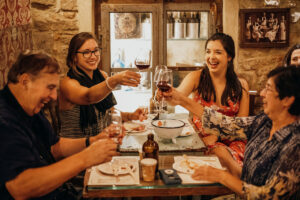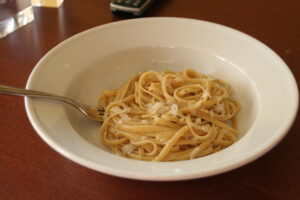Last Updated on October 18, 2025 by | Published: April 1, 2019
If you’re looking for cheap, local food, served with a side of politics, you’ve got to go to a Roman centro sociale
Centri sociali are one of the great, hidden protagonists in Roman cultural life. There are Centri sociali all over Italy, but we’re going to focus on the Roman ones in this blog.
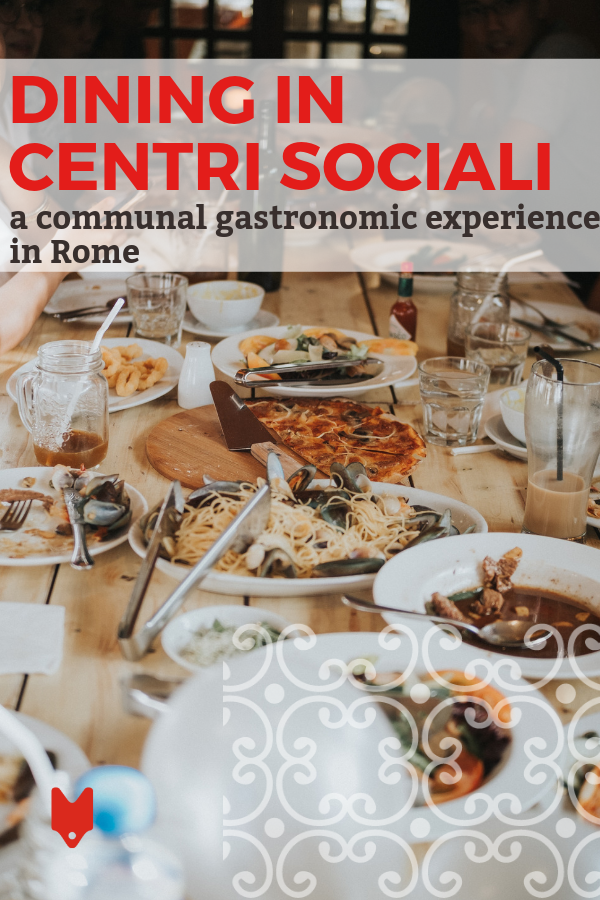
Dining in centri sociali is fun not only for the cheapness (and generally good quality) of the food, but also for the total experience. It’s something that really doesn’t exist in America. For a few bucks, you can have a meal, but also see a side of Rome no tourist group would ever take you to. It’s common to say that a certain trattoria is very “working class” or serves “peasant food.” And while there are a lot of spots in Rome where you can eat well for not too much, dining in centri sociali is truly cheap—you’ll never spend more than €10, and usually much less than that. Part-restaurant, part community-center, part political-statement, a centro sociale is, quite simply, a different way of eating.
So what is a centro sociale?
Centro sociale literally means “social center.” It’s a non-profit space, open to all, and run by its members rather than some central authority. For that, centri sociali often have the acronym CSA before the name, meaning “centro sociale autogestito,” or “self-managed.” Some of the spaces are also CSOA, with the “O” standing for “occupied.” These centri sociali have occupied unused spaces and therefore don’t pay rent. The most famous example is CSOA Forte Prenestino, which has occupied an abandoned army fort in Centocelle for over 30 years and turned it into a space that has to be visited to truly believe.
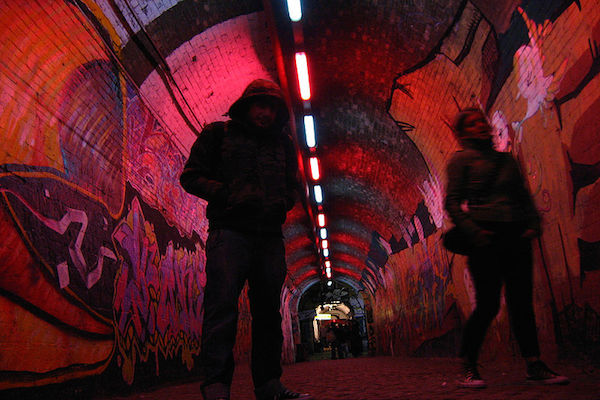
Centri sociali have their roots in 1960’s Italy when leftist politics were at their strongest. Communities and/or groups of activists would occupy spaces and convert them into a center for everyone, and everything. That’s important to keep in mind, because even today, not all centri sociali have a restaurant. For example, Nuovo Cinema Palazzo in San Lorenzo has poetry events, outreach for refugees and even a “populist” radio broadcast, but no food. Villaggio Globale is really just an alternative nightclub. Others might have a little bar, a gym, a language school, a recording studio, services for migrants and battered women … anything they feel should be available to those who come, and perhaps couldn’t afford or aren’t welcome at more mainstream center.
This is all to say that centri sociali are not just places to eat—they view a restaurant as just another service to the community. Even a center like Casetta Rossa in Garbatella, which has table service and a reservation book, isn’t just a restaurant. When you walk in, you’ll smell fresh bread from their “populist brick oven,” (I once begged them to sell me some, it was so good). You’ll see people of all races sitting together, heads bent over €5 plates of beef stew with peas. The walls are covered with art, and in a corner, a free Italian lesson is going on. When’s the last time you saw a restaurant like that?
So what do you eat?
Each centro sociale is different. Some serve strictly Italian food, others more international. Some are vegetarian, even vegan, and others rather omnivorous. CSA La Torre, for example, serves a lot of Roman-inspired fish. At Casetta Rossa, you might find hummus as a starter, and then spaghetti with tomato sauce. Over the years, I’ve eaten at many centri sociali, so I’ll give you a little highlight reel.
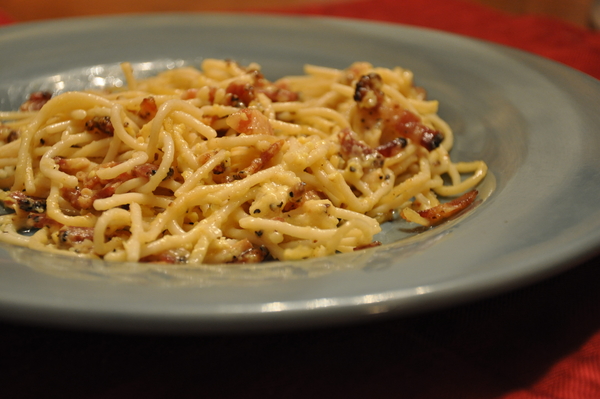
At Forte Prenestino, there’s both the taverna, which is a vegetarian restaurant, and the enoteca (“wine bar”), which focuses on wine and meat dishes. At the former I’ve had pasta with broccoli, and a side dish of perfect roast potatoes and the meatiest sautèed chicory you can imagine. At the latter, a Roman classic: spare ribs and sausages in tomato sauce. At both, the ingredients are more than just “local.” They all come from a network of small farms and backyard gardens, collectively known as Genuino Clandestino, whose products can’t be found at any supermarket or normal restaurant. Forte Prenestino also holds a famous wine festival every March, Enotica. It’s three days of wine, music and food stalls run by these outside-the-system farms and vineyard.
At Scup, there’s “Fish and Beats” every Friday night. Traditionally, Catholics don’t eat meat on Friday. Scup takes that tradition, removes the religion, and adds a local DJ. You might find pasta with cherry tomatoes and swordfish, or a grilled tuna steak, for about a quarter of the price of a normal restaurant.
At both these centri sociali, the system is much the same. You go up the kitchen counter and order your food and a caraffe of wine. The cook will call your name when your dish is ready, and then you sit down at a communal table and help yourself form the communal water and bread and oil. There’s no finger-snapping for a waiter, no private booths, no gigantic steaks. This is eating stripped down to the bare essentials, and I must say, it’s refreshing to do sometimes.
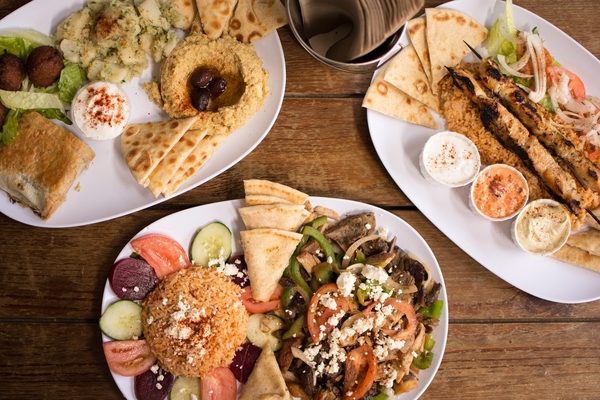
Food and Politics
Like I said above, centri sociali are, by definition, political spaces. Invariably, they are far-left: Virtually every centro sociale has anti-fascist banners, pro-LGBTQ rainbows and something related to Palestinian solidarity and anti-imperialism. So, fair warning. As welcoming as many centers are, if you’re not comfortable with ACAB flags, these are not the places for you.
The food is no different. Centri sociali really do want to cook good food and satisfy bellies. But through the kitchen, they also want to make some statement about how we eat in the modern world, and perhaps offer an alternative.
The use of “clandestine” farms by Forte Prenestino and other centers isn’t just about getting fresh, local produce. For them, it’s a means to liberate themselves from the capitalist/industrial system of agriculture. And even if you only eat there once a month, that’s progress.
On Thursday nights, Scup does something quite extraordinary. They have an “Autistic Kitchen,” in which people with autism run the restaurant for the night. Under the supervision of Scup volunteers and local organizations, people who normally have trouble expressing themselves can, through food, find a medium for fulfillment.
In general, these are spots which see food as both something fundamental and symbolic. At any centro sociale, a hungry person could walk in and receive a free meal, no questions asked. Even fish dishes cost no more than a few euros, because to a centro sociale, everyone has the right to eat a nice plate of fresh fish. At the same time, the act of cooking, serving and eating food is a political act. So while you, as a tourist, probably won’t be a regular at any centro, your presence would be welcome. As long as you enter with an open, respectful mind, the size of your wallet or color of your skin won’t matter.

